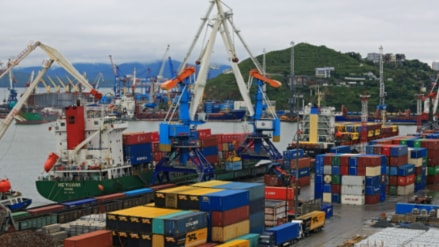By Amit Kapoor
In recent years, there has been a flurry of activity on India’s free trade agreement (FTA) front. News has been abuzz with FTA developments — be it the India-UAE Comprehensive Economic Partnership Agreement (CEPA) in 2022, the Australia-India Economic Cooperation and Trade Agreement (ECTA) in the same year, or the FTA with the UK still in the pipeline.
The Trade and Economic Partnership Agreement (TEPA) between India and the European Free Trade Association (EFTA) comprising Switzerland, Iceland, Norway, and Liechtenstein — concluded earlier this year — is indeed a landmark agreement for multiple reasons. However, amidst the heady fervour around big numbers related to the EFTA TEPA, it is important to see this is an opportunity to discuss challenges plaguing India’s FTAs.
Despite entering into FTAs with some nations, widening trade deficits with partner countries has been cited as a growing concern, bringing into stark relief the lopsided gains in certain agreements. This challenge has been highlighted in the context of India’s FTA with Japan, for instance. India has called for a renegotiation of the CEPA, signed between the two nations in 2011, to make the partnership more “balanced and equitable”.
India’s trade balance with Japan has gone from -$7,910.94 million in 2018-19 to -$11,033.99 million in 2022-23, indicating a widening deficit for India, with exports increasing at a slower rate as compared to the rise in imports. Among other reasons, issues relating to market access for India’s goods and services in Japan remain a pressing concern. This goes to show that tariff reduction does not necessarily boost export growth for the partner country.
Understanding reasons behind trade imbalances is crucial to assess the extent to which an agreement is benefitting partner countries in an equitable manner. While any assessment of India’s agreement with the EFTA should happen over time, it is pertinent to note India’s existing trade deficits with EFTA nations. India has a negative trade balance with EFTA nations, barring Iceland, with which India’s exports surpassed its imports in 2022-23 by $5.46 million.
Why do trade deficits persist despite FTA provisions? How do we review FTAs to guard ourselves against trade imbalances? These are crucial questions to be raised. Addressing these issues calls for a multi-pronged approach. An inverted duty structure has been identified as one of the major inhibitors of export growth.
A recent Parliamentary Standing Committee report highlights this persisting challenge that Indian exporters are faced with. In simple terms, an inverted duty structure refers to a situation in which higher import duties are applicable on inputs more than those on finished products. It makes importing finished products more lucrative, thus stifling domestic manufacturing. The Committee report discusses an example that illustrates the adverse impact of such a situation.
On the one hand, the India-ASEAN FTA offers zero duty to copper tubes and pipes; and on the other, raw materials utilised in the production of copper tubes and pipes—copper cathode and copper scrap—attract import duties of 5% and 2.5% respectively. Policymakers need to address structural issues such as inverted duty structures to ensure a conducive environment for domestic manufacturing and export growth.
What can further add to the complexity of the situation are variations in tariff rates imposed by partner countries. Asymmetric tariff situations may create imbalances in trade flows, like in the case of India and the UK. Indian imports from the UK face a most favoured nation (MFN) weighted average tariff of 13.46% while exports from India to the UK see approximately 3.29% in tariffs levied, according to 2021 World Integrated Trade Solution data.
This essentially means that Indian goods entering the UK confront lower average tariffs compared to UK goods entering India. Thus, tariff reduction through an FTA between the two nations may disproportionately benefit the UK. Switzerland’s recent development in its tariff policies further sheds light on international trade and tariff rates’ complexities.
A report by the Global Trade Research Initiative highlights how Switzerland’s recent decision of tariff-free entry for industrial goods may limit India’s gains from the EFTA TEPA. From India’s experience with FTAs signed in the past, the need for a comprehensive assessment of these agreements is felt strongly.
It is important to understand that signing an FTA is only a starting point. The India-EFTA TEPA is a big step forward. To make an FTA truly successful, it is crucial to assess components that may be thwarting exporters from maximising their benefits from the agreement.
This essentially calls for multifaceted efforts. Setting up mechanisms to undertake continual assessments of signed agreements, monitoring them, and making modifications accordingly are an integral part of these efforts. More importantly, it is crucial to perceive FTAs as one instrument among many to catalyse trade. Complementing FTAs with supportive policies such as infrastructure development, streamlining operations, and capacity-building initiatives amplify FTAs’ impact on economic growth.
Besides establishing new trade ties with nations, one should enquire how our customs procedures can be further streamlined, trade dispute mechanisms improved, and skills developed to ensure that our businesses are able to reap the benefits of India’s expanding relations. Furthermore, maintaining a constant and proactive dialogue or engagement with stakeholders is a prerequisite for a flourishing trade ecosystem.
The author is Chair of the Institute for Competitiveness, and lecturer at Stanford University.
Disclaimer: Views expressed are personal and do not reflect the official position or policy of Financial Express Online. Reproducing this content without permission is prohibited.
